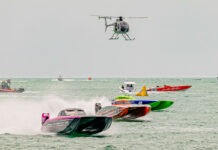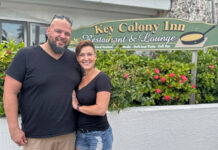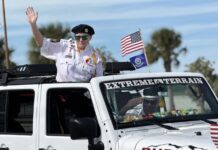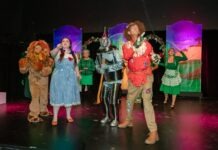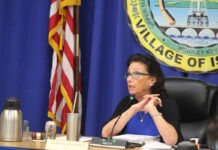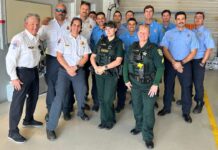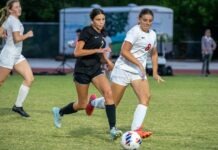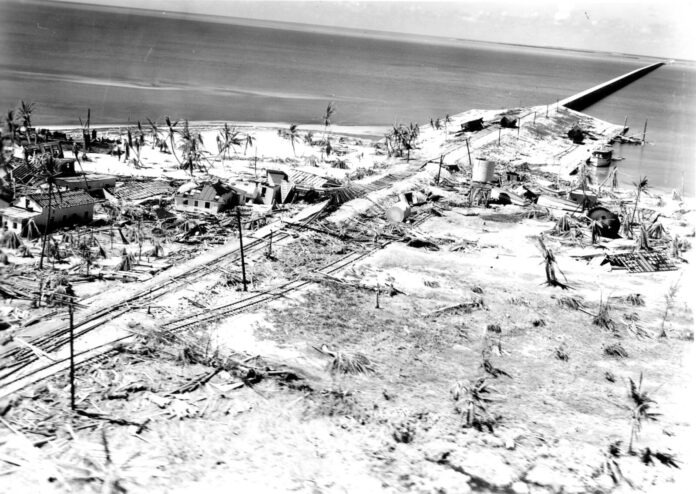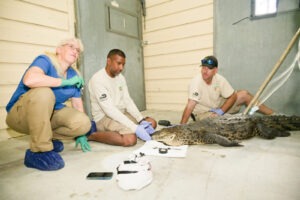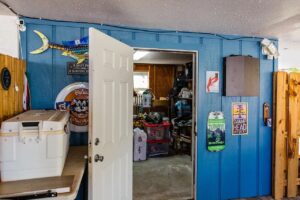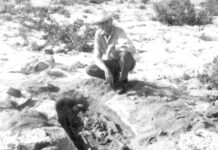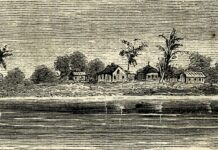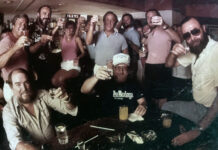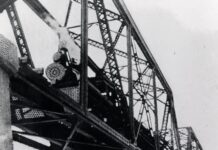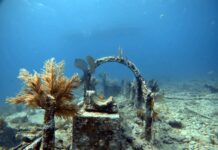Elvis Presley was born in 1935. Porky Pig made his Looney Tunes debut the same year. Additionally, Babe Ruth hit his 714th (and final) home run, and Parker Brothers began marketing the real estate game, Monopoly.
In the Florida Keys, 1935 is remembered for a different reason. It delivered the Labor Day Hurricane, which remains the most powerful storm to make landfall in North America. The eyewall passed over Lower Matecumbe and Long Keys. Wind gusts exceeded 200 mph. The tidal surge was at least 17 feet. Hundreds of lives were lost. While the number is thought to be around 500, exactly how many is a question that may never be answered.
The Labor Day Hurricane was unlike anything the island chain had experienced before, or since. No one was prepared for what was coming. The vast majority of those who died were on Upper Matecumbe and Lower Matecumbe Keys. Some were waiting for a rescue train that arrived too late, while others were trying to ride out the storm.
On the day the storm raged ashore, the following notes were recorded at the Jacksonville office of the Weather Bureau by senior meteorologist Grady Norton and junior meteorologist Gordon Dunn: Monday, 3:30 a.m., Key West reported 82 degrees and winds out of the northeast at 11 mph. “Tropical disturbance still of small diameter but considerable intensity moving slowly westwards off the coast of north-central Cuba. Caution advised against high tides and gales Florida Keys and for ships in path.”
At 10 a.m., Key West reported 88 degrees with winds out of the north at 15 mph.
“Tropical Depression about 200 miles due east of Havana moving slowly westward probably with hurricane force small area near center.”
At 1:30 p.m., Key West reported 82 degrees, with winds out of the north at 18 mph.
“Hurricane warnings ordered for Key West. It will be attended by winds of hurricane force Florida Straits and Florida Keys south of Key Largo this afternoon and tonight.”
Key West reported 83 degrees at 4:30 p.m. Winds were out of the north at 21 mph.
“Hurricane warnings for town of Everglades and Miami to West Palm Beach. Tropical Storm now apparently moving north westward toward Florida Keys and accompanied by hurricane winds over small area. High tides probable. Please notify people in exposed places to take adequate precautions.”
At 10 p.m., Key West reported 81 degrees and winds out of the northwest at 34 mph.
“Hurricane warnings north of Everglades to Punta Gorda. Tropical disturbance of full hurricane intensity but rather small diameter central 8 p.m. near Matecumbe Key moving northwestward accompanied by shifting gales and hurricane winds near center.”
At the Long Key Fishing Camp, J.E. Duane was observing local conditions for the Weather Bureau on Sept. 2, 1935. These were his notes:
- 2 p.m.: Barometer falling; heavy sea swell and a high tide; heavy rain squalls continued.
- 3 p.m.: Ocean swells had changed; this change noted was that large waves were rolling in from SE., somewhat against winds which were still in N. or NE.
- 4 p.m.: Wind still N., increasing to force 9. Barometer dropping 0.01 every five minutes. Rain continued.
- 5 p.m.: Wind N., hurricane force. Swells from SE.
- 6 p.m.: Barometer 28.04 still falling. Heavy rains, wind still N., hurricane force and increasing. Water rising on north side of island.
- 6:45 p.m.: Barometer 27.90. Wind backing to NW., increasing; plenty of flying timbers and heavy timbers too—seemed it made no difference as to weight and size. A beam 6 by 8 inches, about 18-feet long, was blown from north side of camp, about 300 yards, through observer’s house wrecking it and nearly striking 3 persons. Water 3 feet deep from top of railroad grade, or about 16 feet.
- 7 p.m.: We are now located in main lodge building of camp; flying timbers had begun to wreck this lodge and it was shaking on every blast. Water had now reached level of railway on north side of camp. 9 p.m.: No signs of storm letting up. Barometer still falling very fast.
- 9:20 p.m.: Barometer 27.22 inches; wind abated. We now heard other noises than the wind and knew center of storm was over us. We now head for the last and only cottage that I think can or will stand the blow due to arrive shortly. All hands, 20 in number, gather in this cottage. During this lull the sky is clear to northward, stars shining brightly and a very light breeze continued; no flat calm. About the middle of the lull, which lasted a timed 55 minutes, the sea began to lift up, it seemed, and rise very fast; this from ocean side of camp. I put my flashlight out on sea and could see walls of water which seemed many feet high. I had to race fast to regain entrance of cottage, but water caught me waist deep, although writer was only about 60 feet from doorway to cottage. Water lifted cottage from its foundation and it floated.
- 10:10 p.m.: Barometer now 27.02 inches; wind beginning to blow from SSW.
- 10:15 p.m.: The first blast from SSW., full force. House now breaking up—wind seemed stronger than anytime during the storm. I glanced at the barometer which read 26.98 inches, dropped it in water and was blown outside into sea; got hung up in broken fronds of coconut tree and hung on for dear life. I was then struck by some object and knocked unconscious.
- September 3, 1935, 2:25 p.m.: I became conscious in a tree and found I was lodged about 20 feet above ground. All water had disappeared from island; the cottage had been blown back on the island from whence the sea receded and left it with all people safe.”
Every Labor Day since has dredged up memories and stories about the storm. In 1937, the Florida Keys Memorial was unveiled. Commonly known as the Hurricane Monument, it is found on Upper Matecumbe Key and honors those who lost their lives in the storm. The obelisk stands 18 feet tall. At the base of the obelisk is a crypt where the ashes of those burned in funeral pyres in the days after the storm were placed.
A mosaic atop the crypt represents the impact of the hurricane, from Key Largo to the Marathon area. It has been 90 years since the Labor Day Hurricane devastated the island chain. No one has forgotten.


